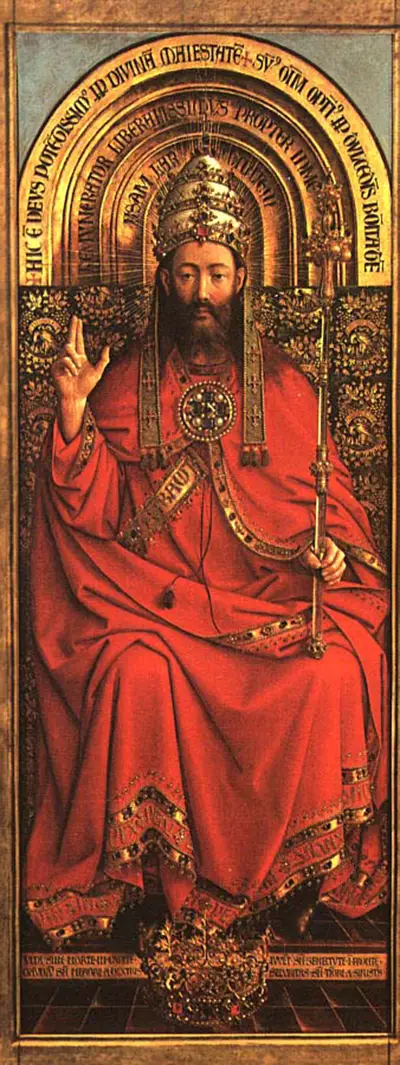God the Father, The Almighty, takes a central position in Jan van Eyck's extraordinary Ghent Altarpiece
The Netherlandish artist placed the most important panels straight down the centre of the piece, with God the Almighty sitting above the Adoration of the Mystic Lamb, a title that many have used as an alternative name for the overall altarpiece.
The lamb is used to represent the suffering of Christ whilst God sits in the upper register, looking resplendent. On days of feasting and celebration this extraordinary artwork would be opened up to reveal the colourful inner panels. It would signify that one could let themselves go a little. Normally it would be closed, with the winged sections moving across to reveal a more sombre mood where devotion and commitment was most important.
Upper register in the context of this type of artwork essentially means upper level. Within it, God the Father is joined either side by panel portraits of Mary on the left and John the Baptist on the right. There are also considerable inscriptions which provide information from the artist about some of the other panels in this complex piece.
There are two folding wings which sit on the outer edge of this collection of panel paintings (Deësis). Closest are the singers in heaven, with opposing portraits of Adam and Eve then sat in the far corner of either side. Whilst we have titled the central panel as God the Father, there has been some discussion over whether in fact this is a portrait of Christ.
The Greek inscriptions translate as "King of Kings, and Lord of Lords", which perhaps suggest that God is the most likely answer. His grand appearance contrasts with the depiction of Christ as a lamb, bleeding as he suffers for us all.
There are further references to Christ's pain in the portrait of God, with the decoration on his throne featuring pelicans and vine. Specifically, Christ's blood and eternal suffering is symbolised by the vines, and the sacramental wine which would have come from them. Pelicans were believed to sacrifice their own blood for their young, another likely reference to his suffering.




